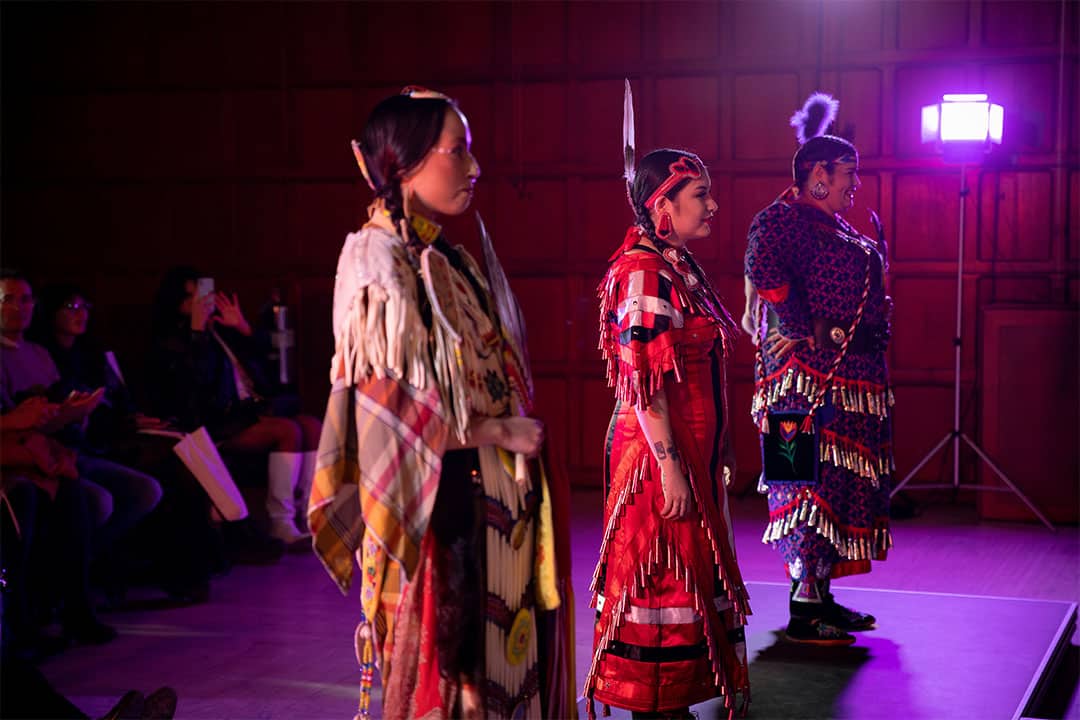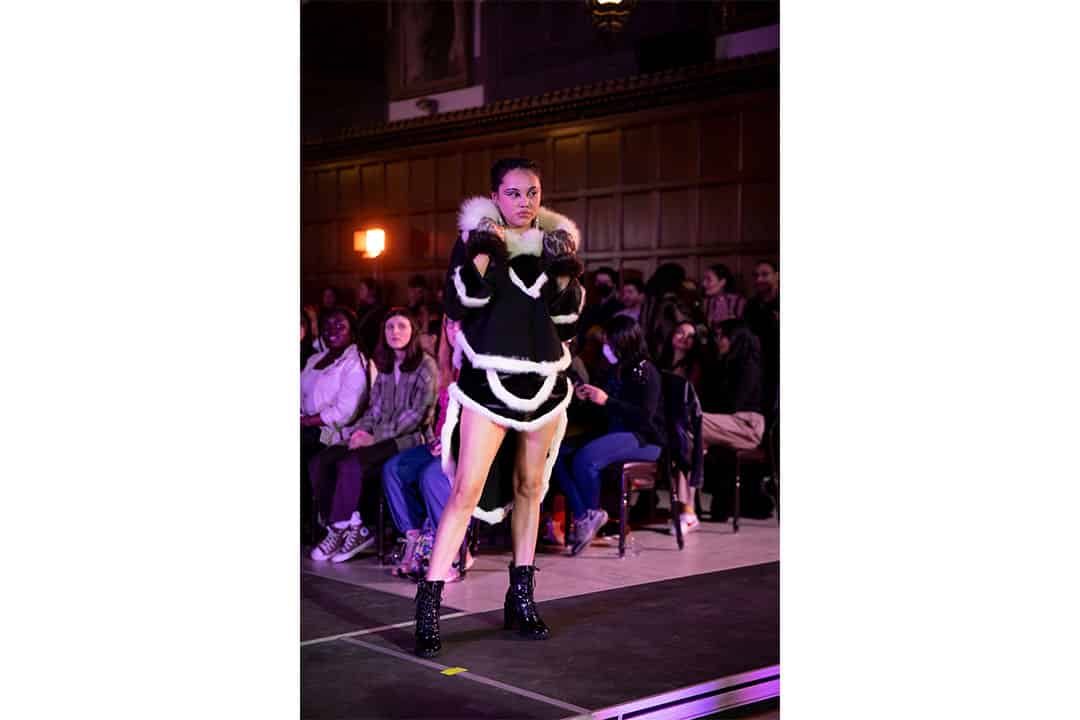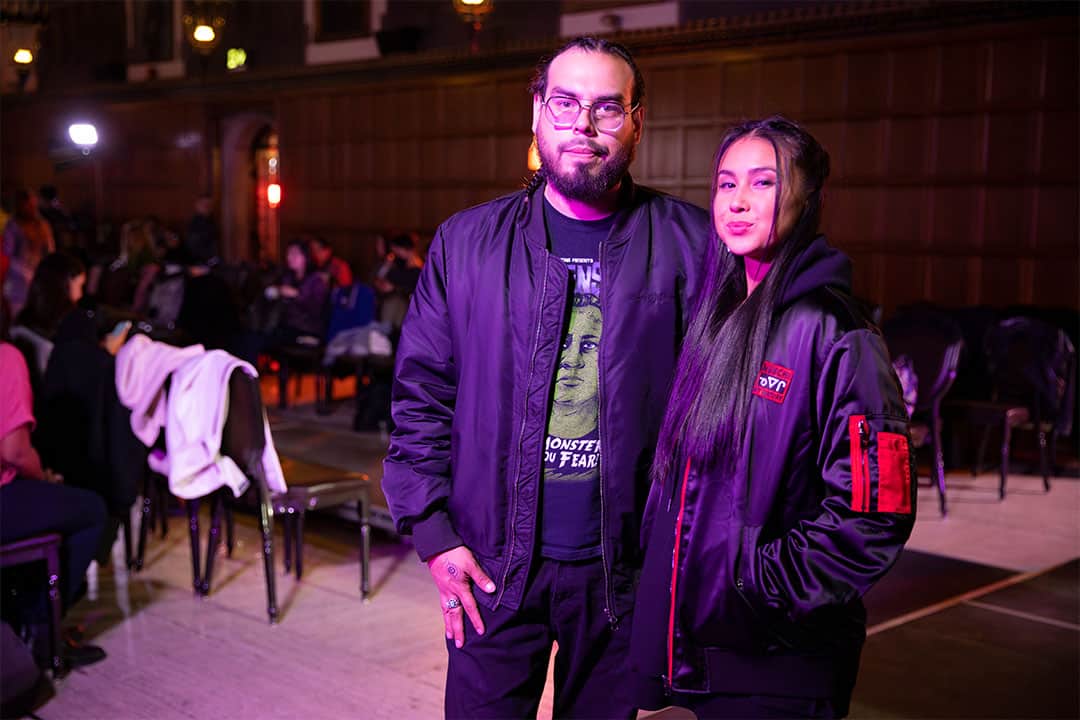It begins, soft at first: the sound of drums echoes from a distant part of the hall. People’s chatter dies down as the beat of the drum picks up, slowly but surely, until the “thump, thump, thump” of the drum becomes the only sound to fill the room, resoundingly ricocheting off the walls. Among many Indigenous peoples, drums symbolize the heartbeat of Mother Earth.
When infants are inside the womb, the mother’s heartbeat is also the first sound they hear — it is through hearing the beat of the drum that we reconnect with our origins.
Hart House hosted the Indigenous Regalia and Fashion Show in their Great Hall on November 3, which celebrated returning to one’s origins, showcasing a selection of works by Indigenous designers. The drums are a fitting start to a night abuzz with excitement and novelty but also with reflection.
The first few models emerged donning regalia: intricate garments worn for major ceremonies and community events that come in an eclectic mix of colours, styles, and materials. The women danced down the runway to the enduring beat of the drums.
As the runway progressed, the pieces began to reflect more of the zeitgeist of the modern era: from sweat sets, denim pairings, and printed jackets to European-style evening gowns and corsets. However, they remained inspired by the upbringing of each designer. For instance, beadwork was a medium that made many appearances in new and inventive ways.
This juxtaposition forces the audience to behold the evolving meaning of indigeneity and to see that Indigenous cultures are not stagnant. Rather, they are fluid, influencing and being influenced by mainstream culture.
The event was star-studded, to say the least. The headline designer, Lesley Hampton, is an Anishinaabe artist and fashion designer who showcased her work at Milan Fashion Week earlier this year. She is the creative director of her own brand, Lesley Hampton; a curve model with BNM Model Management; and a speaker on Indigenous entrepreneurship.
Justin Jacob Louis, a member of the Samson Cree Nation and another big name on the show’s roster, has been featured in Vogue and showcased in In America: A Lexicon of Fashion at The Metropolitan Museum of Art in New York City last year. He is also the creative director and founder of SECTION 35, an Indigenous-owned, streetwear fashion brand.
Alongside Hampton and Louis, an equally talented cohort of brands featured their designs, including IX BALAM, a Maya K’iché interdisciplinary artist, and Neechi by Nature, an athleisure brand that features Indigenous syllabics and motifs on their clothing, through creating spaces, services, and a platform for all emerging artists. Alongside them was Aaniin — Canada’s first department store that is 100 per cent Indigenous-owned, which partners with aforementioned brands such as Lesley Hampton and SECTION 35 as well as Ocean Kiana, a Nishinaabe woodland-style artist that specializes in digital art, painting, drawing, beading, and sewing.
Another big name that made the night was its MC, the charismatic Chelazon Leroux — a contestant on the third season of Canada’s Drag Race, stand-up comedian, and social media content creator. Leroux peppered in cheeky comments and witty jokes between every collection that made its way down the runway.
Leroux is a status member of the Buffalo River Dene Nation and has family ties to the Fond Du Lac First Nation. Their identity as a Dene, two-spirit drag queen is in many ways emblematic of the theme of the fashion show: to demonstrate the evolving nature of Indigenous identity and culture. Their work in drag — a profession that took off in North America as a subculture within queer Black and Latino communities — is evidence of how Leroux’s identity as an Indigenous person interacts with non-Indigenous, North American queer culture, but still anchored by their own roots as a two-spirit individual. They are a product of both their Indigenous heritage and influences of other cultures, making them the perfect person to guide the audience through a show with just as many complexities.
Together, these designers and brands put together an unforgettable showcase. Leroux ended the night by congratulating the designers on their hard work and creative spirit. The fashion show was emblematic of both the metamorphosis of Indigenous history and culture and the trajectory of fashion going forward as an industry with a growing appreciation for Indigenous artists and art forms.





No comments to display.